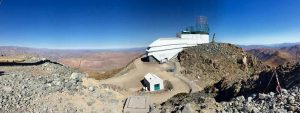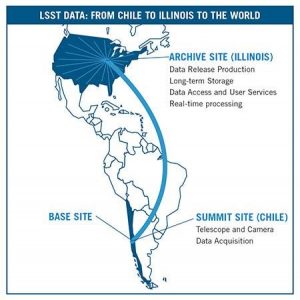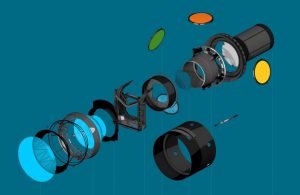The main goal of the Large Synoptic Survey Telescope (LSST) is to conduct a 10-year survey of the sky that will deliver a 120 petabyte set of images and data products that will address some of the most pressing questions about the structure and evolution of the universe and the objects in it.

Michelle Butler and Margaret Johnson at the National Center for Supercomputing Applications (NCSA), lead the Center’s efforts to process data for LSST. NCSA will be the global hub for LSST’s data management, including processing, storage, and archives. LSST will collect 20 terabytes of raw image data every night, which will be processed at NCSA in near-real time to produce alert notifications of new and unexpected astronomical events and then into daily produced products. The data will be reprocessed annually to create a 500-petabyte data archive by the end of the 10-year mission.
The Large Synoptic Survey Telescope will use a massive 8.4-meter telescope and 3-gigapixel camera to produce a wide-field astronomical survey of the universe. It is the largest digital camera ever constructed. At about 5.5 ft (1.65 m) by 9.8 ft (3 m), it’s roughly the size of a small car and weighs almost 6200 lbs (2800 kg).
The quality and volume of this data will be unprecedented in optical/infrared astronomy, and will be used to explore a wide range of astrophysical questions, ranging from detecting exploding supernovae, finding potentially hazardous near-Earth asteroids, exploring transient phenomena, and probing the mysteries of dark energy and dark matter. Today, an image of the sky can be taken every 15 days, but with LSST the entire sky can surveyed every three days.
LSST will begin full science operations in 2023. This work would be impossible without the vital collaborations of NCSA, LSST and several other organizations dedicated to astronomical discoveries, through the Association of Universities for Research in Astronomy (AURA) and the Cerro Tololo Inter-American Observatory (CTIO).
– National Center for Supercomputing Applications (NCSA) and National Petascale Computing Facility (NPCF).
Large Synoptic Survey Telescope. (2018). Home Page. Retrieved from https://www.lsst.org/


